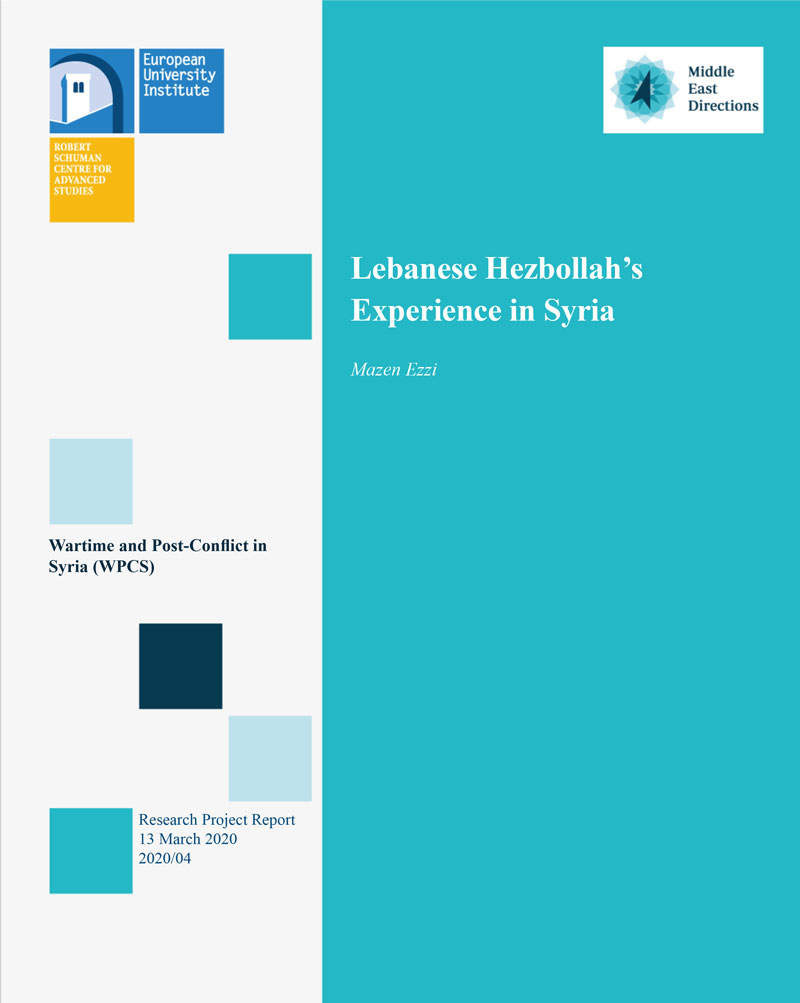MEDirections is delighted to share a new Research Project Report from the Wartime and Post Conflict in Syria project (WPCS).
This paper was originally published in Arabic on 3 March 2020. It is now available in English.
 During the past seven years of its direct military intervention in Syria, Lebanese Hezbollah has developed new tools to maintain its long-term stay in the country. The purpose of its deployment varies from one region to another in accordance with the strategic importance of the region to the party. Similarly, the manner in which the party builds its alliances and relations with local communities and state institutions also varies according to the region. This paper first examines the differences in its military and security presence in the three main areas in which it is deployed: the Syrian-Lebanese border, southern Syria and Syrian Shia settlement areas. It also analyses how the party transforms its political-military influence into economic activities such as smuggling and drug trafficking to finance its operations in Syria, which include purchases of land in specific places such as the town of al-Qusayr in the Homs countryside and the Sayyidah Zaynab area south of Damascus. Finally, the paper examines the way that Lebanese Hezbollah seeks to integrate within the local social fabric beyond the small Syrian Shia community to ensure its civil support in the long term.
During the past seven years of its direct military intervention in Syria, Lebanese Hezbollah has developed new tools to maintain its long-term stay in the country. The purpose of its deployment varies from one region to another in accordance with the strategic importance of the region to the party. Similarly, the manner in which the party builds its alliances and relations with local communities and state institutions also varies according to the region. This paper first examines the differences in its military and security presence in the three main areas in which it is deployed: the Syrian-Lebanese border, southern Syria and Syrian Shia settlement areas. It also analyses how the party transforms its political-military influence into economic activities such as smuggling and drug trafficking to finance its operations in Syria, which include purchases of land in specific places such as the town of al-Qusayr in the Homs countryside and the Sayyidah Zaynab area south of Damascus. Finally, the paper examines the way that Lebanese Hezbollah seeks to integrate within the local social fabric beyond the small Syrian Shia community to ensure its civil support in the long term.



